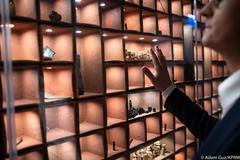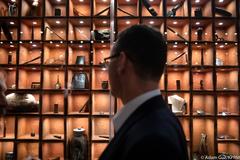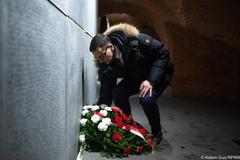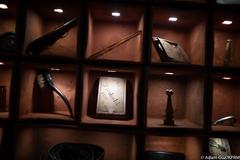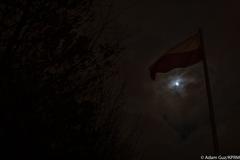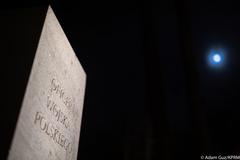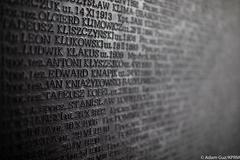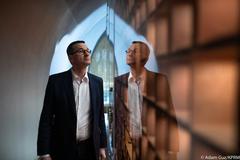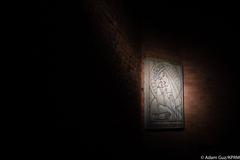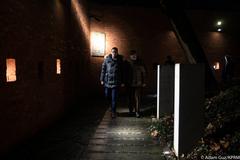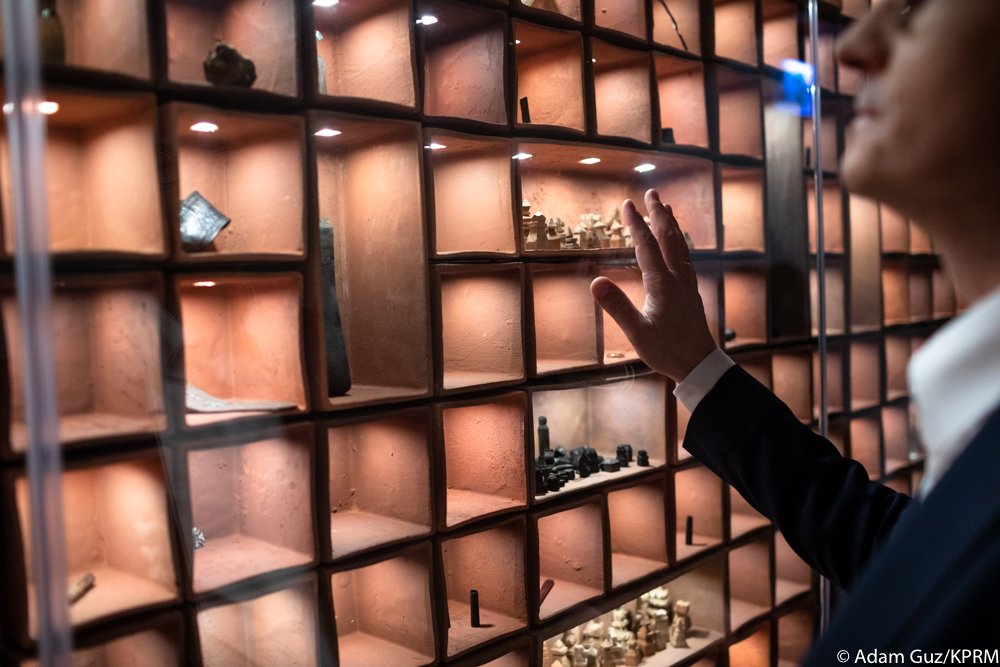
Katyń Museum Visiting Hours, Tickets, and Warsaw Historical Sites Guide
Date: 14/06/2025
Introduction
The Katyń Museum in Warsaw, Poland, is a solemn institution dedicated to commemorating the victims of the Katyń Massacre—a tragic episode during World War II in which over 21,000 Polish officers, intellectuals, and prisoners of war were executed by the Soviet NKVD in 1940. More than just a memorial, the museum is an educational space that confronts historical truths, honors national memory, and fosters reflection on justice and resilience. Situated within the historic Warsaw Citadel, the museum’s poignant architecture and thoughtfully curated exhibitions offer visitors an immersive journey through history, memory, and symbolism.
Whether you are a history enthusiast or a visitor seeking to understand Warsaw’s complex past, this comprehensive guide provides essential information on the museum’s origins, visiting hours, ticketing, accessibility, and nearby attractions. The Katyń Museum stands as a beacon of cultural dialogue and historical education, making it a must-visit site in Warsaw. (ArchDaily, WhichMuseum, Cultura Obscura)
Table of Contents
- Introduction
- Historical Context and Genesis of the Katyń Museum
- Architecture and Symbolism
- Mission and Educational Purpose
- Collection and Exhibition Highlights
- Visiting Hours, Tickets, and Accessibility
- Visitor Experience and Practical Tips
- Nearby Attractions
- Special Events and Commemorations
- Frequently Asked Questions (FAQ)
- Conclusion & Call to Action
- References and Further Reading
Historical Context and Genesis of the Katyń Museum
Established in 1993 as part of the Polish Army Museum, the Katyń Museum (Muzeum Katyńskie) was created to collect, preserve, and present artifacts related to the Katyń Massacre. For decades, the Soviet Union denied responsibility, which made the museum’s mission vital in both honoring the victims and promoting historical truth and national reflection. The museum’s relocation to the Warsaw Citadel in 2015 marked a significant architectural and symbolic milestone. (WhichMuseum)
Architecture and Symbolism
The Katyń Museum’s home within the southern section of the Warsaw Citadel—a 19th-century fortress—was designed by BBGK Architekci. The museum integrates three historic military buildings, guiding visitors through spaces that reflect the victims’ journey and the enduring impact of the massacre. Notable features include:
- Path of Remembrance: Visitors enter through the Nowomiejska Gate, following a route lined with trees symbolic of the Katyń Forest.
- Symbolic Materials: Concrete walls embedded with letters, ammunition fragments, and personal items provide a tactile connection to history.
- Memorial Arcades: 12-meter-high walls guide visitors past arcades inscribed with the names of victims, transitioning from darkness to light—representing both tragedy and hope.
- Oak Cross: Among the trees stands an oak cross, serving as a powerful symbol of national mourning and resilience. (ArchDaily, Cultura Obscura)
Mission and Educational Purpose
The museum’s mission is to commemorate the Katyń victims, encourage reflection, and educate on the massacre’s historical, political, and ethical dimensions. The permanent exhibition details the events surrounding the massacre, the subsequent Soviet cover-up, and the personal stories of victims through:
- Primary Documents: Original orders, photographs, and correspondence
- Personal Artifacts: Uniforms, letters, and religious items
- Multimedia and Interactive Displays: Enhancing accessibility for diverse audiences (Lonely Planet)
The museum also fosters dialogue on justice, forgiveness, and national memory, notably through its commemorative plaques and educational programs. (ArchDaily)
Collection and Exhibition Highlights
The Katyń Museum’s comprehensive collection is drawn from massacre sites in Katyń, Kharkiv, and Mednoye, emphasizing both the scale of the tragedy and individual human stories. Highlights include:
- Recovered Artifacts: Personal belongings such as letters, photographs, religious medals, and uniform fragments
- Official Documents: Orders and correspondence revealing the execution process and subsequent cover-up
- Audio-Visual Installations: Immersive presentations of victims’ stories and historical context
- Memorial Plaques: Names of all known victims inscribed in the gunrest arcades for powerful remembrance (ArchDaily, WhichMuseum)
Visiting Hours, Tickets, and Accessibility
Visiting Hours
- Monday: Closed
- Tuesday to Sunday: 10:00 AM – 5:00 PM
- Last admission: 30 minutes before closing
- Closed: Major holidays (Easter, May 1st, Corpus Christi, All Saints’ Day, Christmas, New Year’s Eve)
- For up-to-date opening hours, check the official museum website.
Tickets
- Adults: 20 PLN
- Reduced (students, seniors): 10 PLN
- Free admission: Children under 7, disabled visitors, and on designated special days
- Tickets can be purchased on-site or online. Audioguides are available for 10 PLN. (Cultura Obscura)
Guided Tours and Educational Programs
- Guided tours in Polish and English are available by prior arrangement and are strongly recommended for in-depth understanding.
- Educational workshops and temporary exhibitions are scheduled regularly; check the museum’s events page for current offerings.
Accessibility and Getting There
- Location: ul. Jana Jeziorańskiego 4, Warsaw Citadel, 01-521 Warszawa
- Public Transport: Tram (Park Traugutta 04 stop), metro (Dworzec Gdański station), and several bus lines nearby
- Parking: Limited; public transport is recommended due to city center traffic
- Wheelchair Accessibility: Ramps, elevators, and accessible restrooms provided; some historic areas may be challenging—check ahead if you have specific needs
Visitor Experience and Practical Tips
- Layout: The museum’s exhibitions are arranged chronologically, guiding visitors from pre-war Poland through the massacre and its aftermath.
- Duration: Plan for 1.5–2 hours; history enthusiasts may need longer
- Dress Code: Modest attire is recommended due to the solemn nature of the museum
- Photography: Allowed in most areas, but some zones with personal artifacts or memorial spaces may have restrictions—observe posted signage
- Amenities: Restrooms, cloakroom/lockers, and a museum shop (no on-site café; dining available nearby)
- Languages: Exhibits are bilingual (Polish/English); guided tours and materials available in several languages
Nearby Attractions
- Warsaw Uprising Museum: Complementary WWII history
- Polish Army Museum: Military artifacts and history
- Old Town and Vistula River Walks: Explore Warsaw’s architectural heritage
- Żoliborz District: Local dining and historic architecture
Special Events and Commemorations
The museum hosts annual commemorative ceremonies, particularly on April 13th (National Day of Remembrance for the Katyń Massacre Victims), as well as lectures, temporary exhibitions, and educational programs. Consult the official museum website for the latest event schedule.
Frequently Asked Questions (FAQ)
Q: What are the Katyń Museum visiting hours?
A: Tuesday to Sunday, 10:00 AM to 5:00 PM; closed on Mondays and select holidays.
Q: Is there an entrance fee?
A: Yes, adults: 20 PLN; concessions: 10 PLN; free for children under 7, disabled visitors, and on special days.
Q: Are guided tours available?
A: Yes, in Polish and English; book in advance.
Q: Is the museum wheelchair accessible?
A: Yes, facilities are generally accessible, but some older areas may present challenges.
Q: Can I take photos in the museum?
A: Yes, in most areas, except where restrictions are posted.
Q: How do I get there?
A: By tram (Park Traugutta 04), metro (Dworzec Gdański), bus, or on foot from nearby attractions.
Conclusion & Call to Action
The Katyń Museum is a vital testament to Poland’s history and collective memory. Its powerful exhibitions and symbolic architecture ensure that the tragedy and lessons of the Katyń Massacre endure for future generations. Whether visiting for personal reflection, education, or historical interest, the museum provides a contemplative and meaningful experience.
For up-to-date information on visiting hours, tickets, and events, consult the official museum website. Download the Audiala app for audio guides, virtual tours, and curated cultural experiences across Warsaw’s historical sites.
Plan your visit today and engage with an essential chapter of Polish and European history.
Images:
- The solemn Katyń Massacre Memorial monument surrounded by trees in Warsaw (alt: Katyń Massacre Memorial in Warsaw)
- Group of tourists listening to a guide at the Katyń Museum (alt: Visitors at the Katyń Museum during a guided tour)
- Katyń Museum Warsaw entrance (alt: Katyń Museum Warsaw entrance)
- Katyń Museum historical artifacts display (alt: Katyń Museum historical artifacts display)
References and Further Reading
- Katyń Museum Warsaw: Visiting Hours, Tickets, and Historical Insights (WhichMuseum)
- Katyń Massacre Memorial: History, Tickets, and Travel Tips (Warsaw Heritage)
- Katyń Museum Architecture by BBGK Architekci (ArchDaily)
- Visitor Experience and Practical Information (Cultura Obscura)
- The Katyń Museum in Warsaw: Architecture of Difficult Memory (Archisearch)
- They were shot in the back of the head: The Katyń Massacre exhibition (IPN Exhibition Details)
